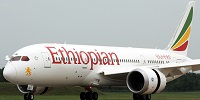BY ERIC CZULEGER
Why You Should Care
A disputed part of a war-torn nation is holding out promise for the Horn of Africa.
Hong Kong–based American business developer Robby Zirkelbach has set up small firms in South Sudan, Iran and North Korea. But Somalia was too risky even for the former U.S. Marine sniper with a stomach for adventurous investments, until he stumbled upon the country’s north, the self-declared Republic of Somaliland. There, he sees promise in a land shattered by war.
After a walk through the bustling, dust-filled market at the center of the region’s capital, Hargeisa, and a trip to the developing port city of Berbera, Zirkelbach has decided to “dip a toe” into the developing market. He has identified electronics as an area where his company would like to invest, and he isn’t alone.
Prospective investors are flocking to a part of Somalia that most of the world doesn’t recognize as a separate entity, attracted by its strategic geography, relative stability and mineral wealth. Such recognition is driving its next big economic hope.
UAE-based DP World is redeveloping Berbera Port on the Horn of Africa to accommodate modern supertankers, a development that could open northern Somalia — or Somaliland — to the large markets of neighboring Ethiopia and Kenya. Wassim Haroun, CEO of Conser, a regional engineering and development firm, sees potential in the northern Somali desert and is currently building a road connecting Berbera and Ethiopia.
And Faiza Dubbe, a partner at regional firm SomOil Company who was born and raised in undivided Somalia and moved to Canada as a refugee in 1986, has now returned to Somaliland to invest in an oil and trading business. She chose the separated region over southern Somalia that is still controlled by the federal government, because Somaliland — unlike the south — has maintained stability and held democratic elections for years.
“Once you get over the misconception that Somaliland may be unsafe, you open your eyes to the vast potential of this country and to what its people can achieve,” says Haroun.
That the peace in northern Somalia coexists with the legacy of decades of war is evident on the streets of Hargeisa as the call to afternoon prayers during Ramadan rings out. Men shutter their shops and bring their prayer rugs to the mosque, walking through row after row of building blocks festooned with barbed wire. Guards with AK47s manning checkpoints pray in the road rather than abandoning their posts.
The Somali civil war began with military resistance to the dictator Siad Barre in the 1980s. The Barre government collapsed in 1991, plunging the country into a vicious conflict. Somaliland declared its independence that year. As the crisis worsened, Puntland, a region in central Somalia, declared autonomy in 1998, though it still remains loyal to the federal government.
But while many have written off Somalia as a failed state struggling to rid itself of the terrorism and corruption that’s blighted its recent history, its north is emerging as a beacon of economic hope. Ironically, the fact that Somaliland is separated is simultaneously its boon and its bane — though the fractures between Somalia’s three regions mean that development in one doesn’t mean either unity or prosperity for all.
Somaliland’s passports are recognized by only eight countries, and it receives no bilateral foreign aid. But it’s separate governance — whether recognized or not — from the war-torn south means its mineral resources, strategic location and relative security are drawing private investment and development the federal government can’t match.
Other stumbling blocks stand in the way of the north’s economic development. Its infrastructure was largely destroyed during the civil war. And the region is prone to both flooding and drought due to climate change and degradation of pastures. The broader perceptions of conflict and instability that hover over all of Somalia affect investor sentiments for the north too.
But to developers like Haroun, these obstacles are opportunities for investment, which make Somaliland look like a “blank white canvas.” And for those familiar with the region, the security the north can offer is something the south still isn’t close to providing. He believes “it’s [Conser’s] job to provide our expertise to help this country leapfrog into the next millennium.”
Though southern Somalia has had an internationally recognized federal government since August 2012, it has been beset by terrorist attacks. In October 2017, the al-Qaida-affiliated Al-Shabab group killed more than 500 people in a bombing in Somalia’s capital, Mogadishu. According to the Corruption Perception Index (CPI), Somalia is also the 9th most corrupt country in the world. And the deep tribal divides unleashed by the civil war continue to tear at the country’s society. According to the World Bank, 90 percent of the federally controlled south’s total spending is on security, relegating redevelopment of infrastructure, social services, education and other municipal functions to the back burner. That’s why, says Dubbe, many Somalis are choosing to do business in the north. “As a woman, I feel safe [doing] business in Somaliland,” she says.
In some ways, Zirkelbach’s journey to Hargeisa also marks a personal return. He had witnessed conflict in Somalia while he was with the U.S. Marines. “I wanted to just engage and see if we could do something good for the people out here,” he says. Like Haroun, Dubbe and others, Zirkelbach is betting on the development of a part of the country whose identity is unresolved. But as Somalia slowly emerges from the ashes of war, this is where hope is sprouting first.
Source: OZY



